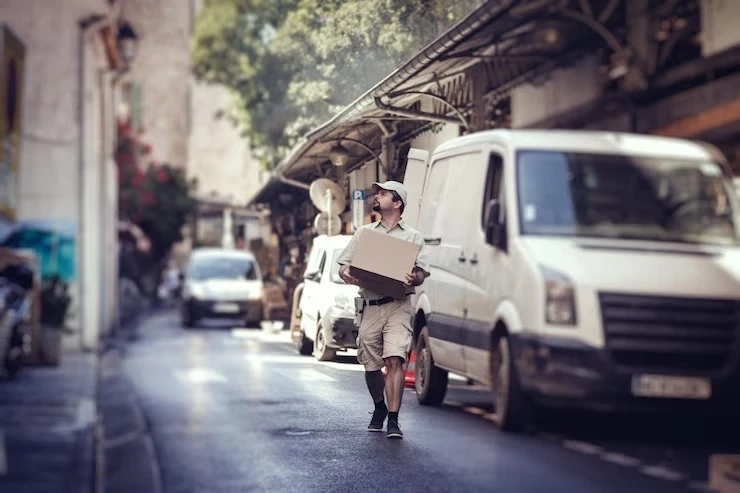Moving an office is never easy. There are computers, desks, printers, and countless cables that must all travel without damage. Office equipment is delicate and expensive, which means that even a single careless mistake can cost a business both time and money. That’s why knowing how to move your equipment safely in a moving van can make a big difference. Whether you’re relocating to a new building or upgrading your workspace, using the proper techniques and tools can ensure a smooth, stress-free move.
Understanding Office Equipment and the Moving Process
Office equipment encompasses a wide range of items, including computers, photocopiers, monitors, furniture, filing cabinets, and phones. These items are essential for daily operations, and protecting them during transit should be your top priority. Using a moving van is one of the most efficient ways to transport them securely and conveniently.
However, it’s not just about loading items into a van. Each piece of equipment needs special handling, packing, and placement. Poor organisation can lead to scratches, dents, or even broken parts. In this guide, you’ll discover six simple yet effective steps to move your office equipment safely in a moving van in Dublin or anywhere else.
Step 1: Create a Detailed Moving Plan
Every successful office move begins with a plan. Start by listing all the equipment that needs to be moved. Include computers, furniture, printers, scanners, telephones, and storage units. Please take note of their size, weight, and fragility.
Next, assign responsibilities. Decide who will pack the electronics, who will label boxes, and who will oversee the loading. Schedule your move during off-hours to minimise disruption to business operations.
Having a written plan helps avoid confusion and delays. It ensures every item is accounted for and transported safely. When hiring a moving van, share this plan with the movers. It helps them understand your specific requirements and handle your equipment with care.
Step 2: Use the Right Packing Materials
Packing materials protect your equipment from shock, dust, and scratches. Use strong cardboard boxes, bubble wrap, foam padding, and stretch film. For computers and electronics, use anti-static covers to prevent electrical damage.
Always label boxes with “Fragile” or “Handle with Care” to alert movers. Use colour-coded stickers or numbering systems to track what’s inside each box. Pack heavier items at the bottom and lighter ones on top.
When you’re transporting through a moving van, proper packing ensures stability during movement. Avoid overloading boxes or leaving empty spaces inside them. Fill gaps with crumpled paper or foam to prevent shifting during transit.
Step 3: Disassemble Large Equipment
Large office equipment, such as desks, chairs, and modular workstations, should be disassembled and loaded separately to ensure efficient loading and unloading. Remove drawers, legs, and other detachable parts. Keep screws and small components in labelled plastic bags.
Disassembling reduces the risk of breakage and makes it easier to load items into the moving van efficiently. It also saves space and allows for better organisation inside the vehicle.
Be careful with cables and wires. Bundle them neatly with twist ties or Velcro straps. Label each set according to the equipment to which it belongs. This will make reassembly much quicker once you reach your new office.
Step 4: Load the Van Strategically
Loading your moving van correctly is crucial to avoiding damage during transportation. Always load heavy furniture first and place it against the walls of the truck. This helps distribute weight evenly.
Next, load medium-sized boxes and electronics in the centre. Finally, place light or fragile items on top. Secure all items with ropes or straps to prevent shifting while driving.
Ensure that fragile items, such as monitors or glass tables, are upright and cushioned on all sides. Avoid stacking boxes too high. Overstacking can cause boxes to fall or crush items beneath them.
If you’re using a moving van in Dublin, ensure the vehicle has sufficient space for your load. A professional mover can help you choose the right size of van based on your inventory.
Step 5: Handle with Care During Transit
Even when packed and loaded correctly, office equipment still needs careful handling. Drive slowly and avoid sudden stops or sharp turns. Rough handling can lead to internal damage to electronics or loosened fittings on furniture.
Professional movers trained in office relocations understand how to transport delicate items safely. If you’ve hired a service using a moving van in Dublin, communicate your priorities clearly. Inform them about sensitive or valuable equipment that needs extra attention.
Always inspect your items upon arrival. Check for scratches, dents, or broken parts before unloading everything. This ensures any issues can be addressed immediately with your movers.
Step 6: Unload, Reassemble, and Test Everything
Once you arrive at your new location, unload items systematically. Start with furniture and large equipment, then smaller boxes. Keep your checklist handy to ensure nothing is missing.
Reassemble desks, chairs, and other furniture. Connect computers, printers, and other devices carefully to ensure a stable connection. Plug in electronics only after checking that all cords and connections are intact.
Testing your equipment right away ensures that everything arrived in good condition. If anything isn’t working correctly, you can identify and fix the problem quickly.
A well-organised move using a moving van in Dublin not only saves time but also prevents expensive downtime for your business.
Conclusion: Move Smart, Move Safe
Moving your office can be stressful, but it doesn’t have to be. With careful planning, the right packing materials, and a dependable moving van, you can relocate safely and efficiently. Following these six steps helps protect your valuable equipment and ensures your team can get back to work quickly. Whether you’re moving across town or hiring a moving van in Dublin, preparation and professional help make all the difference.



